P.J. Harvey "Let England Shake" 2011 Island Records

There was little doubt left as the year lists for 2011 were made public. Sunday Times thought so, Mojo thought so, Uncut thought so, The Guardian thought so, NME thought so, The Quietus thought so and I agreed - P.J. Harvey’s “Let England Shake” is a masterpiece that fully deserved to be voted album of the year by all of the above mentioned myself included. This is meant as an introduction to the short films Seamus Murphy made for the twelve songs on the album.
It took P.J. Harvey several years to write “Let England Shake”. The reviewer in The Guardian called the album “an opaque exploration of Englishness”, and several others have referred to the album as an (anti)war record. The lyrics for the songs on the album refers to England and Englishness in songs like “The Last Living Rose” and “Let England Shake” and torn bodies, soldiers, weapons, and more specifically to the Battle of Gallipoli in “On Battleship Hill”, “The Colour of the Earth "and” All and Everyone", but you will find traces of the two themes in all of the album’s songs.
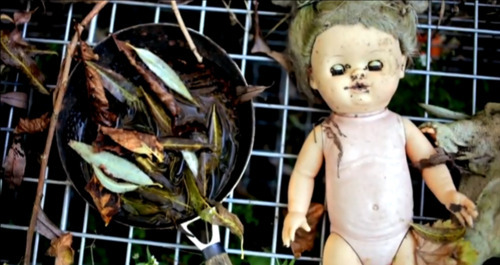
© Still from the Music video by PJ Harvey performing The Last Living Rose, 2010
Along the way, PJ Harvey has sought inspiration from poets like T.S. Eliot and Harold Pinter, Goya’s “Disasters of War”, Dali’s work from the period around the Spanish Civil War, England’s history, historical narratives from various wars, and eyewitness accounts from both soldiers and civilian taken from the First World War and up until the present conflict in Afghanistan. As part of this research she saw the Irish photographer Seamus Murphy’s series “Darkness Visible” exhibited in London and got hold of the accompanying book. Seamus Murphy’s black / white series were taken through the years that had passed since he first set foot in Afghanistan in 1994, and reveals more aspects of life in the ravaged country.
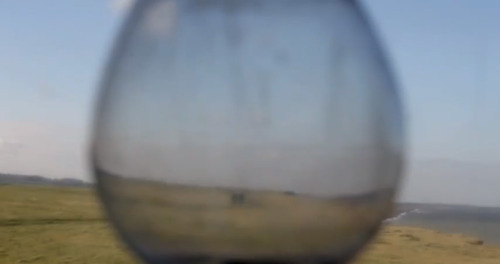
© Still from the Music video by PJ Harvey performing All And Everyone, 2011
Sometime after the show PJ Harvey got her manager to contact Seamus Murphy to see if he might be interested in doing something with her. At this time Seamus Murphy only knew P. J. Harvey by name, and was not familiar with her work. The starting point was to have Seamus Murphy take some press photos, portraits and images for the cover. Seamus Murphy had just returned from a mission in Afghanistan when he was photographing PJ Harvey the first time. There he had for the first time worked intensely with vivid images for an ongoing film project. Conversation fell on his newfound fascination and enthusiasm for this and the idea of making a documentary for “Let England Shake” was put on the table and quickly removed again in favor of the idea of making a short film for each of the twelve tracks on the album. Initially it was the thought that the films should consist of a series of still images, i.e. a kind of rolling slide show that would accompany the music, but the vivid images took over and still images are only used in three of the twelve films. Ideas were exchanged, and Seamus Murphy’s experience of the album as an English record made by an English artist, became the point of reference for the short films to show his interpretation of England, its people and landscape, inspired by “Let England Shake”. The assignment became an eight thousand kilometer drive, and the result became twelve short films.
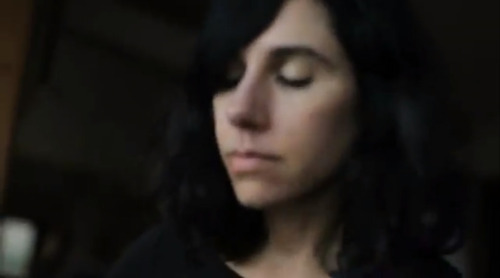
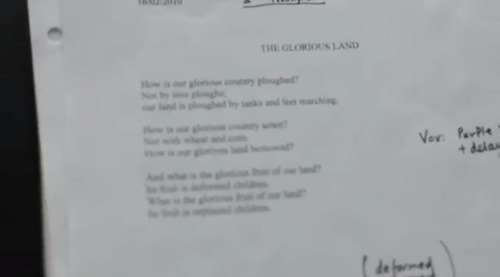
© Still from the Music video by PJ Harvey performing The Glorious Land, 2011
The imagery in the short films is significant. Decay is reflected as a consistent feature, images of the tide shows the times coming and going, treetops and lampposts flicker underway and in the video for “This Glorious Land” the film begins with pictures of a big proud tree whose green tree top sways slightly in the wind, and a few minutes later we see a naked tree standing alone in a field showing no trace of life. War leaves traces and death. One thinks of the British Isles when you see pictures of a lone swimmer, and later a lone boat surrounded by sea, and you are reminded that the British Empire is not what it once was when a bunch of wilted roses appear, when the clouds in a long sequence slowly removes the sunlight and pulls a darkness over the landscape and a mechanic, hardly coincidentally, says about a car “she’ll soldier on, the old ones are the good ones.”
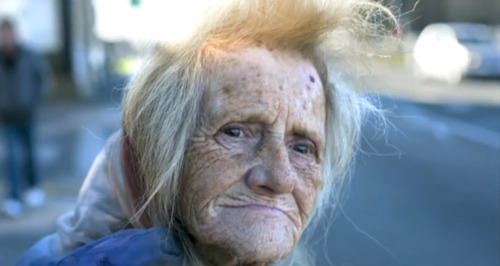
© Still from the Music video by PJ Harvey performing The Last Living Rose, 2010
However, there is much more to be had. The camera is rarely moving, footage serves as living stills, people are portrayed, not in the split second it takes to take a portrait picture, but in sequences that shows the life lived in their faces. The same goes for the landscapes, the sky, the night, the organ player and the abandoned amusement park. The new footage is mixed with old black / white farewell scenes, and elsewhere old portraits, soldier images and entire families are shown in a way that automatically makes you think, which of these unknown fates left, who returned and who lost someone? Seamus Murphy’s own black / white images from conflict areas emerge as a reminder that conflicts still takes place. Several times close-ups of children and adults appear in the movies, and again my thoughts automatically search for the answers to which conflict the adults has fled from and which conflict are the children children of the victims from? It is possible that these people are just random ethnic Englishmen, but the imagery is so rich and complete, and the topics of the album lyrics so present that it is difficult not to attach a meaning to each clip.
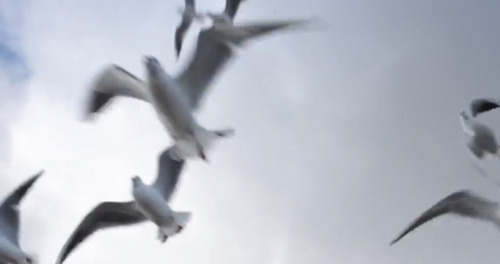
© Still from the Music video by PJ Harvey performing Bitter Branches, 2011
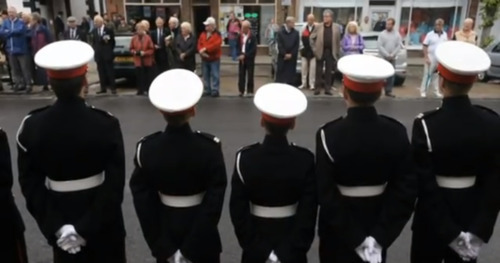
© Still from the Music video by PJ Harvey performing In The Dark Places, 2011
Weather is a dominant factor in the videos; rain, snow and hail are frequently present, as are everyday England. Dancers, concert goers, hunters, urban life, traffic, men with their radio controlled boats, dead pheasants and chickens, mixed in between everything else. This is also England. PJ Harvey appears in the clips, there is footage of her alone with her guitar, and with her auto harp, in “Battleship Hill” she is sitting in the church where “Let England Shake” was recorded with the hymn numbers in the background pointing to the numbers on the older women’s bingo plates in the footage that also plays a large part in the short film, and you see her with the rest of her group in the video for “The Colour of the Earth” where they with their voices, foot stomp and handclaps give an unamplified and breathtakingingly undramatic version of the song.
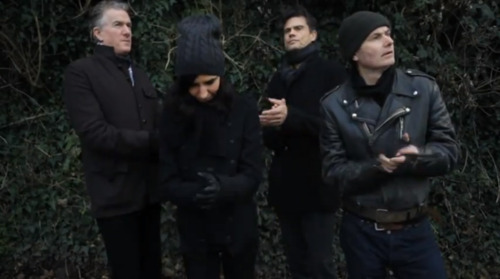
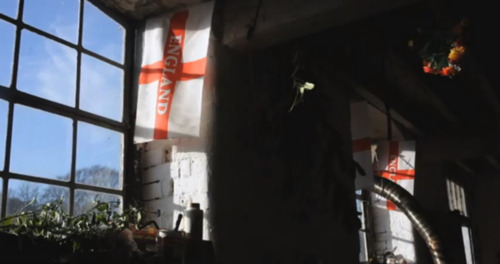
© Still from the Music video by PJ Harvey performing The Colour Of The Earth, 2011
As an appendix to the album the short films are fabulous. Seamus Murphy does a good job in his role as observer and interpreter. In an interview with Slant Magazine he said «My background is documentary still photography, reportage. A lot of that is reacting to things that are happening. You have ideas, but they’re not scripted. The whole thing is trying to capture the essence of what’s going on around you and interpret it». I don’t think that he has ever thought that the methods he uses in his job to interpret everything from the world’s war zones to everyday life, should form the basis for a series of elaborate music videos and I find it fascinating that what should simply have been a series of portraits ended with an eight thousand kilometer journey and twelve films that manages to build on top of a work that was already a masterpiece.
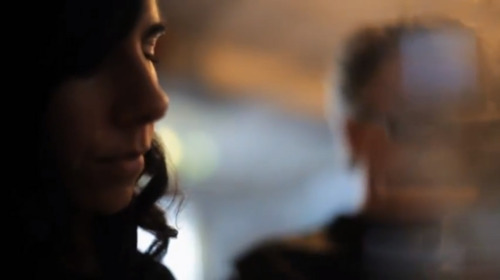
© Still from the Music video by PJ Harvey performing On Battleship Hill, 2011
© All copyright remains with the photographer and property
---
Undercover is a special issue dedicated to photographers and musical covers.
share this page